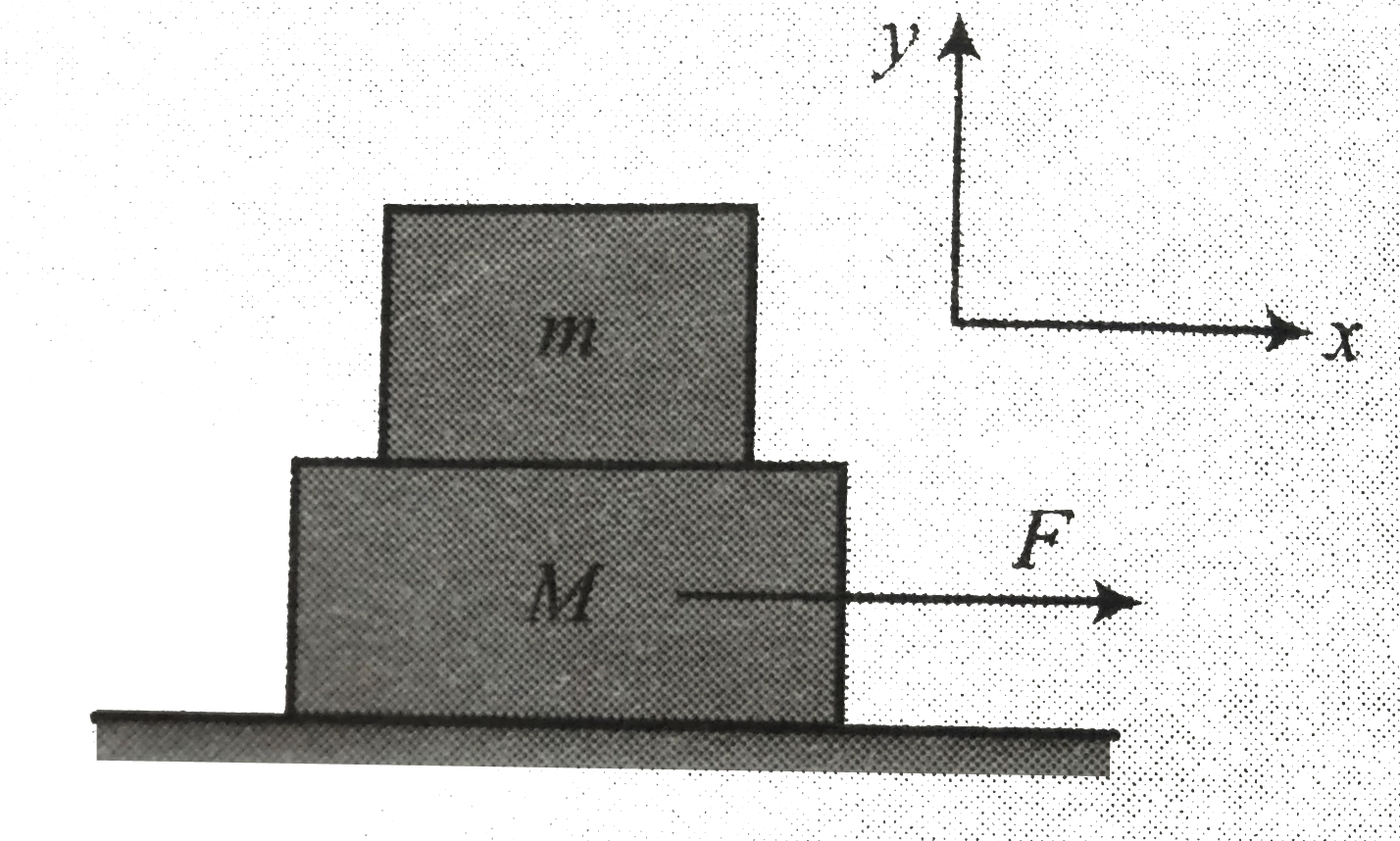The velocity of a moving body of mass m along positive.x axis is v=a√x (a=constant). Find the work done by the force applied on the body to displace it from x=0 to x=l.Solution in Bengali
Power , P =Fv =mfv=mv dvdt
[ acceleration of the body =dvdt] So, work done,
W=∫pdtm=∫vdv=mv22+c=ma2x2+c
[c= integration constant ]
At x=0 , W=0 ∴c=0
Now when x=l,W=12ma2l
Topper's Solved these Questions
- WORK AND ENERGYBOOK - CHHAYA PUBLICATIONCHAPTER - WORK AND ENERGYEXERCISE - EXAMINATION ARCHIVE WITH SOLUTIONS (WBJEE)
3 Videos
- WORK AND ENERGYBOOK - CHHAYA PUBLICATIONCHAPTER - WORK AND ENERGYEXERCISE - EXAMINATION ARCHIVE WITH SOLUTIONS (JEE Main)
8 Videos
- WORK AND ENERGYBOOK - CHHAYA PUBLICATIONCHAPTER - WORK AND ENERGYEXERCISE - ENTRANCE CORNER (Integer answer type )
1 Videos
- WBCHSE QUESTION PAPER -2019BOOK - CHHAYA PUBLICATIONCHAPTER - WBCHSE QUESTION PAPER -2019EXERCISE - SECTION - II ( GROUP -D)
10 Videos
Similar Questions
Work done for a certain spring when stretched through 1mm is 10J . The amount of work that must be done on the spring to stretch if further by 1mm is
View SolutionA particle of mass m moving in the x direction with speed 2v is hit by another particle of mass 2m moving in the y direction with speed v. if the collision is perfectly inelastic , the percentage loss in the energy during the collision is close to
View SolutionA body of mass 4kg is moving with a momentum of 8kg⋅m⋅s−1 . A force of 0.4 N acts on it in the direction of motion of the body for 10 seconds. Determine the increases in kinetic energy in joules.
View SolutionEquations of trajectory of a projectile are x=4 t, y=3t−5t2 , where x and y are in metre and t is in second . Find (i) maximum height attained by the projectille , (ii) horizontal range of the projectile .
View SolutionA mass m is palced on a body of mass M. There is no friction anywhere. Force F is applied on M and it moves with acceleration a. Find the force (along x-axis) on the top body.

View Solution
Adjacent figure shows the force-displacement graph of a moving body, the work done in displacing body from x=0 to x=35m is equal to
View SolutionA body of mass m travels in a straight line with a velocity v=kx3/2 where k is a constant. The work done in displacing the body from x=0 to x is proportional to:
View SolutionA constant force F is applied to a body of mass m moving with initial velocity u. If after the body undergoes a displacement S its velocity becomes v, then the total work done is
View SolutionIf v is the velocity of a body moving along x-axis, then acceleration of body is
View SolutionA body is moving along z-axis of a coordinate system under the effect of a constant force F=(2→i+3ˆj+vˆk)N. Find the work done by the force in moving the body a distance of 2 m along z-axis
View SolutionA force F = alpha +beta x acts on a particle of mass m along the X . Axis . Here alpha and beta are constants . Find the work done by this force when particle moves form x = 0 to x = d .
View SolutionA particle moves along the X - axis with velocity v=k√x . What will be work done by the forces acting on particle during interval it moves from x = 0 to x = d ? (Assume mass of the aprticle is m ) .
View Solutionvelocity of a particle of mass m v=a sqrt x Moves from a is an exponent Find the total work done by x = 0 to x = d.
View SolutionA force →F=8ˆi+3ˆk displaces a body through 2 m along x-axis. Work done by the force in joules is
View SolutionThe velocity of a moving body of mass m along positive x axis is ν=a√x (a= constant). Find the work done by the force applied on the body to displace it from x = 0 to x = l.
View Solution
